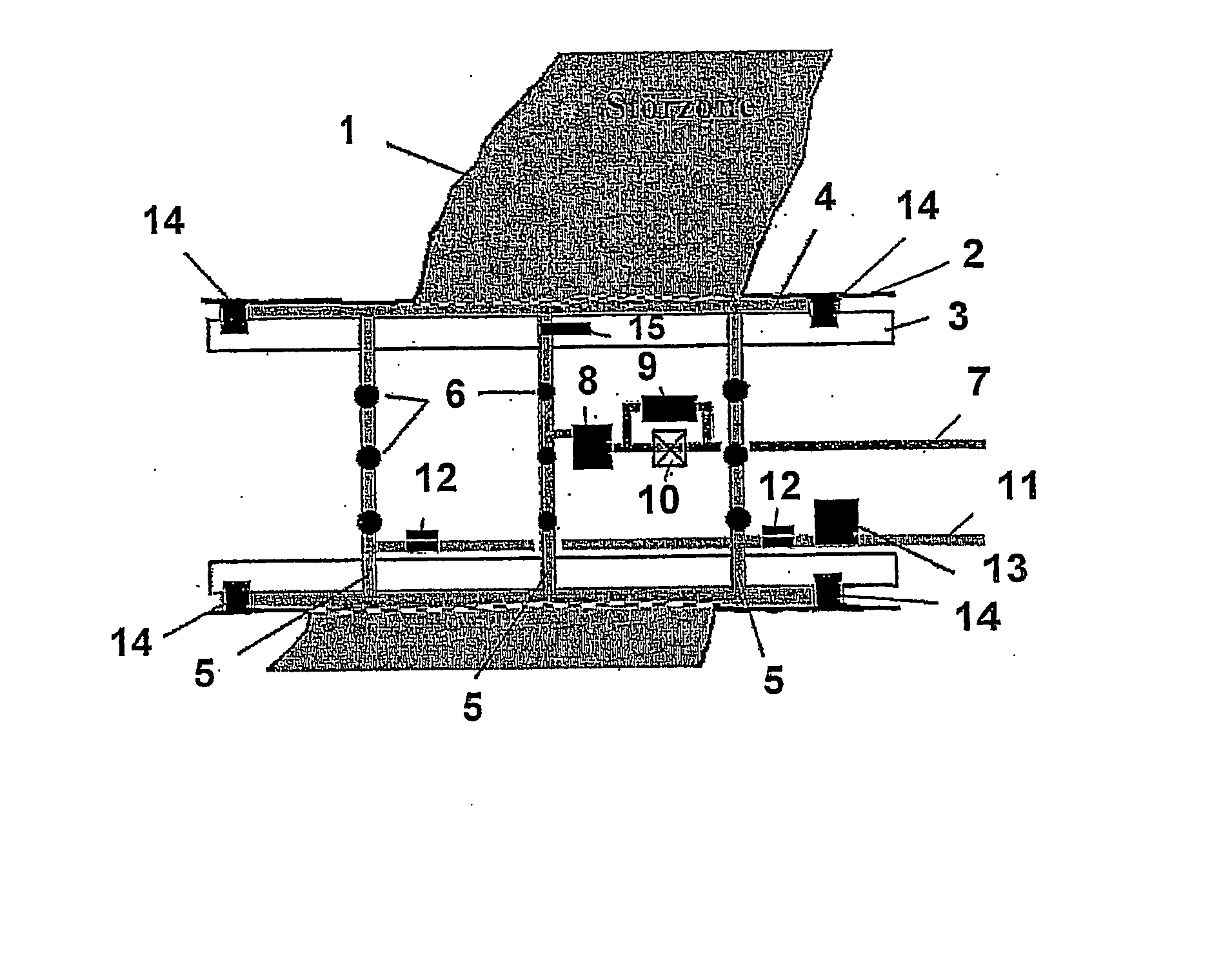Method and Device for Trenchless Laying of Pipelines
a pipeline and trenchless technology, applied in the field of trenchless underground laying of pipelines, can solve the problems of inability to form impermeable zones or filter cakes, undesired reactions, and inability to achiev
- Summary
- Abstract
- Description
- Claims
- Application Information
AI Technical Summary
Benefits of technology
Problems solved by technology
Method used
Image
Examples
Embodiment Construction
[0029]FIGS. 1 and 2 show a borehole 2 which is surrounded by the ground 1 and into which piping comprising individual pipes is introduced. The borehole 2 is produced by a shield tunnel boring machine which is disposed in front of (in FIG. 1 on the left-hand side) the piping and advanced in the forward direction (in FIG. 1 to the left), an annular space 4 being maintained between the wall of the borehole 2 and the individual pipes 3. A trailing pipe can be provided if necessary between the shield tunnel boring machine and the first of the following pipes 3.
[0030] The illustrated pipe 3, which is for example the first pipe behind the shield tunnel boring machine or at the first lubricating station, contains a test and injection device with three annular injection lines 5 which abut on the inner wall of the pipe 3 and, in the circumferential direction at uniform mutual spacings, have injection connection pipes 6 which are guided radially through borings in the pipe 3 and discharge int...
PUM
 Login to View More
Login to View More Abstract
Description
Claims
Application Information
 Login to View More
Login to View More - R&D
- Intellectual Property
- Life Sciences
- Materials
- Tech Scout
- Unparalleled Data Quality
- Higher Quality Content
- 60% Fewer Hallucinations
Browse by: Latest US Patents, China's latest patents, Technical Efficacy Thesaurus, Application Domain, Technology Topic, Popular Technical Reports.
© 2025 PatSnap. All rights reserved.Legal|Privacy policy|Modern Slavery Act Transparency Statement|Sitemap|About US| Contact US: help@patsnap.com


